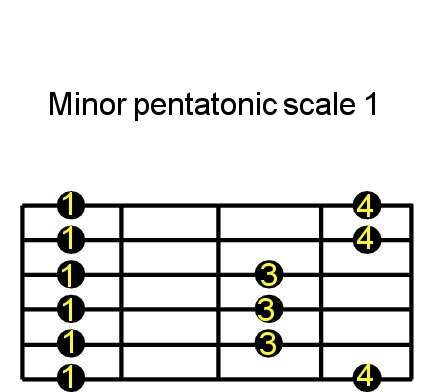The minor pentatonic scale is a staple in guitar playing, used in a variety of genres from blues to rock to metal. It is a versatile scale that can be used for both rhythm and lead playing, making it an essential skill for any guitarist to master. In this article, we will break down the minor pentatonic scale and provide an easy-to-follow guitar tab to help you learn it quickly and efficiently.
Understanding the Minor Pentatonic Scale
Before we dive into the guitar tab, it’s important to understand the structure of the minor pentatonic scale. It is a five-note scale that is derived from the natural minor scale. The notes in the A minor pentatonic scale are A, C, D, E, and G. These notes can be played in any order and still sound good together, making it a great scale for improvisation.
Guitar Tab for the A Minor Pentatonic Scale

To play the A minor pentatonic scale, start by placing your index finger on the 5th fret of the low E string. This is your root note, A. Then, follow the tab below to play the rest of the scale:
e|———————————5-8-| B|—————————5-8——-| G|———————5-7————-| D|—————5-7——————-| A|———5-7————————-| E|—5-8——————————-|
Once you reach the 8th fret on the low E string, you have completed one octave of the A minor pentatonic scale. You can continue playing the scale up and down the fretboard, or you can start on a different root note to play the scale in a different key.
Using the Minor Pentatonic Scale for Improvisation
One of the most exciting aspects of the minor pentatonic scale is its versatility in improvisation. You can use this scale to create melodic solos or add flavor to your rhythm playing. To get started with improvisation, try playing the scale in different patterns and rhythms. You can also experiment with bending and sliding notes to add more expression to your playing.
Tips for Mastering the Minor Pentatonic Scale
- Practice playing the scale in different keys to become comfortable with it all over the fretboard.
- Experiment with different patterns and rhythms to create unique sounds.
- Use backing tracks or jam with other musicians to practice improvisation.
- Don’t be afraid to make mistakes and try new things. That’s how you’ll develop your own style and sound.
Conclusion
The minor pentatonic scale is a fundamental skill for any guitarist to master. With its versatility and ease of use, it’s no wonder it’s used in so many genres of music. By following the guitar tab and tips provided in this article, you’ll be well on your way to mastering the minor pentatonic scale and taking your guitar playing to the next level. Happy playing!
